Simon Boccanegra. Opera in a prologue and three acts by Giuseppe Verdi. 1856. Revised for La Scala, Milan, in 1881. Libretto by Francesco Maria Piave, with contributions by Giuseppe Montanelli, after the play Simón Bocanegra by Antonio García Gutiérrez. Libretto of revised version by Arrigo Boito. First performance at the Teatro La Fenice, Venice, on March 12, 1857. Attended: premiere, June 17, 2022.
Conductor: Speranza Scappucci
Direction : Laurence Dale
Simon Boccanegra: George Petean (baritone)
Amelia Boccanegra, his daughter: Federica Lombardi (soprano)
Jacopo Fiesco: Riccardo Zanellato (bass)
Gabriele Adorno: Marc Laho (tenor)
Paolo Albiani: Lionel Lhote (bass)
Pietro: Roger Joakim (baritone)
Orchestra and Choir: Opéra Royal De Wallonie-Liège
Direction: 4*
Music: 4,5*
You can have any review automatically translated. Just click on the Translate button,
which you can find in the Google bar above this article.
Liege, Liege, always Liege!
It is often the custom on opera websites to include in reviews a short, or not so short, synopsis. “To get into it again, to refresh our knowledge,” so to speak. Whether synopses are a good tradition is debatable. The average reader knows what the most popular operas are about. But could you briefly recap Il Trovatore?
Simon Boccanegra: let’s make an attempt to unravel. Genoa, ca 1350. Paolo and Pietro want Boccanegra as Doge of Genoa. Boccanegra agrees; the position may come in handy because he wants to marry the current Doge’s (Fiesco’s) daughter. Fast forward: Before dying, Fiesco’s daughter gives birth to a girl, but she disappears into thin air. (Did they get a good look inside the containers?)
Twenty-five years later, Amelia is serenaded by her lover Gabriele Adorno. Adorno and Fiesco conspire against the Doge. Fiesco tells Adorno that Amelia is only an orphan… Boccanegra was just about to have Amelia marry his courtier Paolo, but when he realizes that she must be his long-lost daughter, he changes his mind. Paolo decides to kidnap Amelia, but it is Boccanegra who is suspected of kidnapping her. The horrified Boccanegra then wants to kill the real kidnapper. Paolo is not amused and decides to poison Boccanegra. Gabriele Adorno accuses Amelia of infidelity. Then Amelia reveals herself as Boccanegra’s daughter, after which the three smoke a peace pipe. And what do we hear in the distance? An uprising! When the uprising is put down (“Plebe, patrizi, popolo“) Paolo admits his crimes: this will be an ascenseur pour l’échafaud aka execution! Boccanegra begins to feel increasingly ill from the poisoned drink and rightly fears a worrisome course of illness. On his deathbed, Boccanegra blesses the couple Gabriele Adorno and Amelia; Gabriele receives another bonus: he becomes the new Doge.
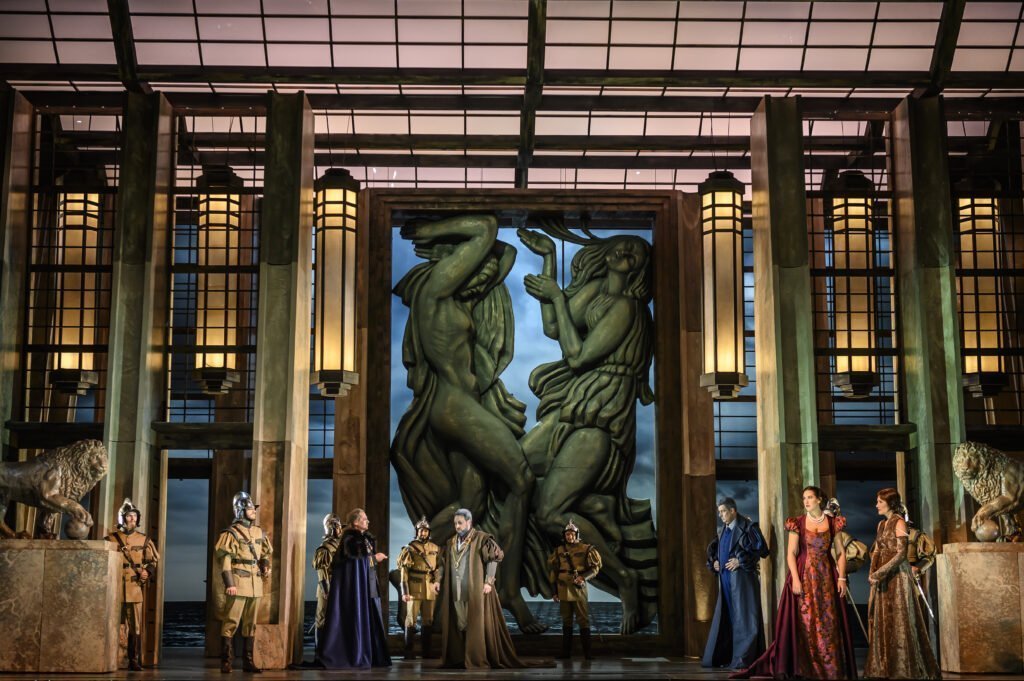
A galling story, even in those days. The opera, therefore, did not achieve much success as a neonate in 1858. Even Verdi thought the libretto in its present form was melodramatic, and spurred on by publisher Ricordi (there HE is again!) Verdi revised his Simone Boccanegra in 1881, together with Boito. In the revised version, the inky blackness of the content is touched up in more moderate tones, and Boccanegra’s role is more prominent. In the prologue, Fiesco gets to perform his moving aria “Il lacerato spirito” and Amelia stirs the hearts with “In quest’ora bruna,” while in the second act Boccanegra’s effective “Plebe! Patrizi! Popolo!” (see/listen above) resounds, suppressing the emergence of a rebellion.
Now success had arrived.
In Liège, Simon Boccanegra would have been Stefano Mazzonis Di Pralafera’s last production; unfortunately, the Grim Reaper put a sad stop to that. Laurence Dale was put in charge of directing, and he delivered a handsome piece of work. Dale is living proof that the rigid notion of “opera” as either modern (libretto rape, wheelchair, refrigerator, car, etc.) or “traditional” (read: stuffy, corny, etc. – an idiotic word in this context, but we’ll discuss that another time) is false. Dale proves that with a modern, sober, somewhat abstracted production, one can leave the opera in question entirely in its value, without having to appeal to absolute madness (for absolute and intensely sad madness in the opera world, see Der Freischütz this season in Amsterdam; extremely suitable as a bachelor party).
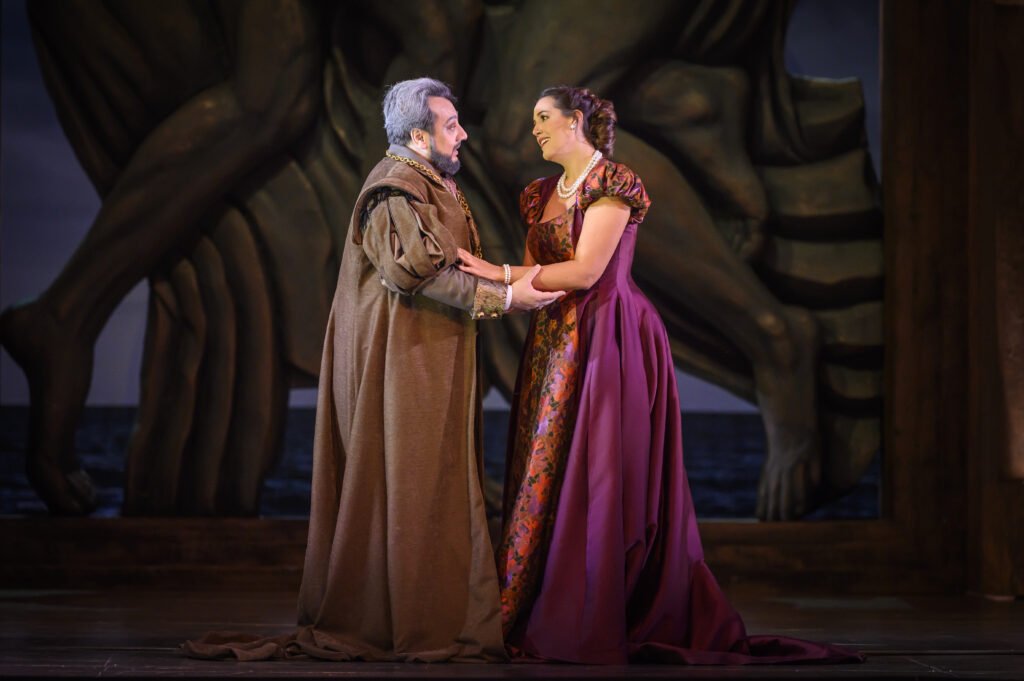
Simone Boccanegra is not Im weissen Rössl: a certain gloom dominates, even in this 1881 version.
An ingenious shifting and rotating set, illuminated by a magnificent range of colors from light blue to cyclamen, took us from one scene to the next;
in view of the complexity of the story it means that one has to pay extra attention to who is doing what now, but of course the true opera lover has already prepared at home for the pithy libretto, and there are always the subtitles (in four languages).
We have long suspected that a past as a singer (Dale was once called the best Tamino after Wunderlich) has a positive correlation with the quality of his/her directing. That suspicion was confirmed during this direction. A small point of criticism might be that the stage setting was occasionally somewhat on the static side. Crowds generally behave in a more mobile manner, especially if they are potential insurgents. The last near-static crowd I observed was the audience at a Christina Branco concert, but then again they were asleep.
Then the cast! What a cast! But first things first: the conductor (real, great conductor, not the Barbara Hannigan type). At this point, it is our firm opinion, Verdi could not wish for a better conductor. We abhor spirituality (we’d rather watch Ajax), but here it really seems as if the spirit of Verdi had nestled himself in
Mrs. Scappucci. How she fully senses the score down to every molecular particle! It is a great pleasure to listen to the orchestra led by her. Unfortunately, Scappucci is leaving Liège, which is a pity for (the visitors of) opera there. This is her last opera as permanent music director in Liege, which should be grateful to Scappucci for having played an important role in putting the Walloon opera mecca on the global map. Brava, bravissima!
The singers were, entirely in line with direction and orchestral playing, top of the bill! The Romanian baritone George Petean (Boccanegra), one of those Verdi baritones that no longer exists according to those “who know”, is a great singer and actor, with perfect diction and empathy for his role. A delight to listen to and enjoy. We initially had some difficulty with the stunningly beautiful (we did not say that) Frederica Lombardi (Amelia Boccanegra). That is, she undeniably has a beautiful, ringing, melodious voice, but in the beginning it sounded a bit cold. Perhaps that was precisely the intention, given the role?
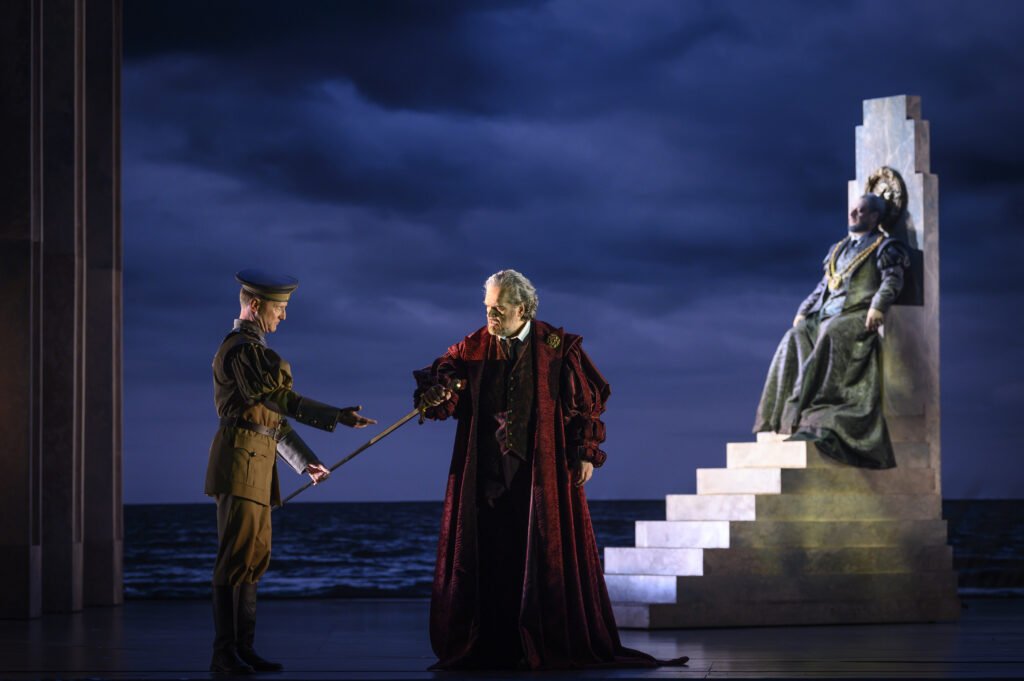
Riccardo Zanellato garnered much acclaim with Jacopo Fiesco’s aria “Il lacerato spirito”. The Belgian Marc Laho, the only tenor in the performance, performed the role of the seducer Gabriele Adorno. Stimmlich he was quite good, but in terms of characterization he was perhaps not the best choice.
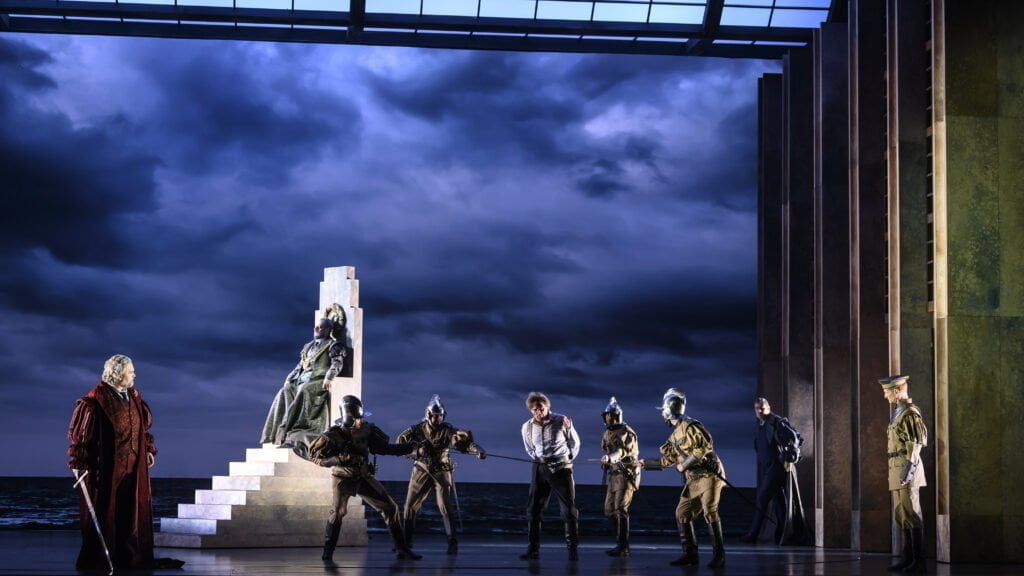
The costumes perplexed us somewhat. They looked like they came from the annual Merchants Market in the historic center of the Dutch village Appingedam. (Please don’t comment that Appingedam is a city: we believe you.) Or they came from the Antwerp outlet “Vintage Clothing from 1500 to 2000.” The rebellious people seemed to have walked straight out of Pieter Brueghel the Elder’s “Peasant Wedding”. The warriors ranged from members of the (East) German Volkspolizei (VoPos) of the former GDR, while Ivanhoe and swordsman Marcus Attilius also made their appearance. All minor details, of course.
This Simon Boccanegra was more than worth the devious escape from the opera lab in Amsterdam, which calls itself The National Opera. (We import our intendants from Libya and Switzerland).
Anyway, by now we know all the stop-overs on the little train from Maastricht to Liège by heart. Train travel + ticket for Liège is cheaper than a seat in a hopelessly outdated venue (The Opera Laboratorium), the opera house in Amsterdam, where one madman after another makes his appearance, either as intendant or director. Calculate your profit.
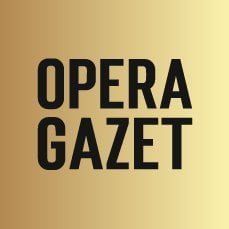
A small correction: Pierre Audi is not from Libya but from Linanon. Kind regards.